Huntington Disease Trinucleotide Repeat
Huntington disease trinucleotide repeat. In Huntingtons disease HD caused by an expanded CAG repeat tract in HTT genetic variation has been uncovered that is associated with change in the onset or progression of disease. We examined the relationship between length of the trinucleotide CAG repeat at IT-15 and clinical progression of Huntingtons disease in 46 mildly to moderately affected patients over a 2-year interval. Patients were divided into those with short mutations 37 to 46 repeats.
MRI showed severe volume loss of caudate and putamen nuclei p0001 and reduced cerebral and cerebellum volumes p001. The early onset patients presented with rigidity bradykinesia dystonia dysarthria seizures and ataxia. Increased numbers of these trinucleotide repeats are associated with several diseases including Huntingtons disease and fragile X syndrome.
Huntingtons Disease HD is caused by an abnormality in the HTT gene. Molecular Biology of Huntington Disease HD is caused by expansion of a CAG trinucleotide repeat in the first exon of the huntingtin gene symbol HTT located on chromosome 4p163 spans over 200 kb and is composed of 67 exons that encode a protein in the normal non-triplet expanded state of approximately 3145 amino acids. As shown in the animation trinucleotide repeats can expand due to slippage during DNA replication.
In HD the repeated sequence is C-A-G. This gene includes trinucleotide repeats ranging from 10 to 35 and when expanded beyond 39 causes HD. This segment is made up of a series of three DNA building blocks cytosine adenine and guanine that appear multiple times in a row.
Huntingtons disease HD is associated with the expansion of a CAG trinucleotide repeat in a novel gene. The HTT mutation that causes Huntington disease involves a DNA segment known as a CAG trinucleotide repeat. The number of repeats can therefore increase with each cell division.
Huntington disease is caused by an expanded CAG trinucleotide repeat in HTT 5 which identifies the pathogenetic agent a mutant form of the multifunctional protein huntingtin. The Huntingtons Disease Collaborative Research Group. Expanded Huntington disease allele sizes varied from 41 to 69 trinucleotide repeats.
We previously reported that CAG repeats in the normal range had a direct and beneficial effect on brain development with higher repeats being associated with higher cognitive function. Some of this variation lies in genes that are part of the DNA damage response previously suggested to be important in modulating expansion of the repeat tract in germline and somatic cells.
Some of this variation lies in genes that are part of the DNA damage response previously suggested to be important in modulating expansion of the repeat tract in germline and somatic cells.
The early onset patients presented with rigidity bradykinesia dystonia dysarthria seizures and ataxia. The number of repeats can therefore increase with each cell division. Patients were divided into those with short mutations 37 to 46 repeats. Our protocol outlines an approach for introducing an expanded CAG repeat tract into the first exon of the HTT gene the Huntingtons disease causing mutation. We examined the relationship between length of the trinucleotide CAG repeat at IT-15 and clinical progression of Huntingtons disease in 46 mildly to. The HTT mutation that causes Huntington disease involves a DNA segment known as a CAG trinucleotide repeat. We previously reported that CAG repeats in the normal range had a direct and beneficial effect on brain development with higher repeats being associated with higher cognitive function. Molecular Biology of Huntington Disease HD is caused by expansion of a CAG trinucleotide repeat in the first exon of the huntingtin gene symbol HTT located on chromosome 4p163 spans over 200 kb and is composed of 67 exons that encode a protein in the normal non-triplet expanded state of approximately 3145 amino acids. A codon three letter sequence of bases that is the chemical blueprint for building proteins from DNA that is repeated consecutively in a section of DNA.
MRI showed severe volume loss of caudate and putamen nuclei p0001 and reduced cerebral and cerebellum volumes p001. N 25 and those with long mutations or 47 repeats. In HD the repeated sequence is C-A-G. Patients were divided into those with short mutations 37 to 46 repeats. The Huntingtons Disease Collaborative Research Group. Some of this variation lies in genes that are part of the DNA damage response previously suggested to be important in modulating expansion of the repeat tract in germline and somatic cells. Huntingtons disease HD is associated with the expansion of a CAG trinucleotide repeat in a novel gene.


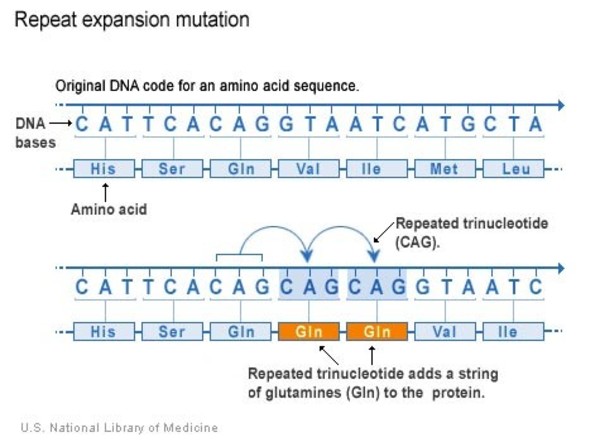



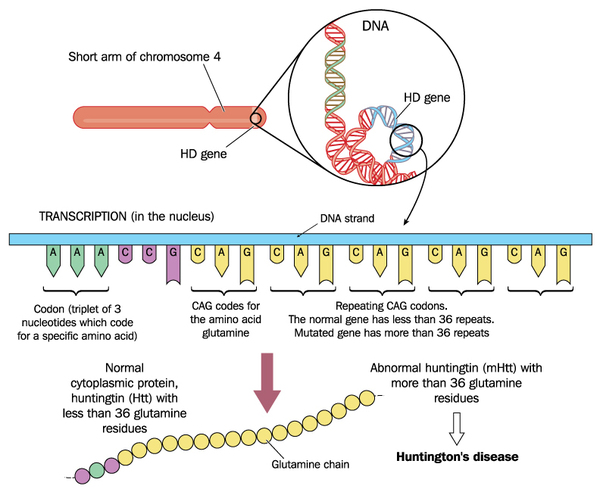
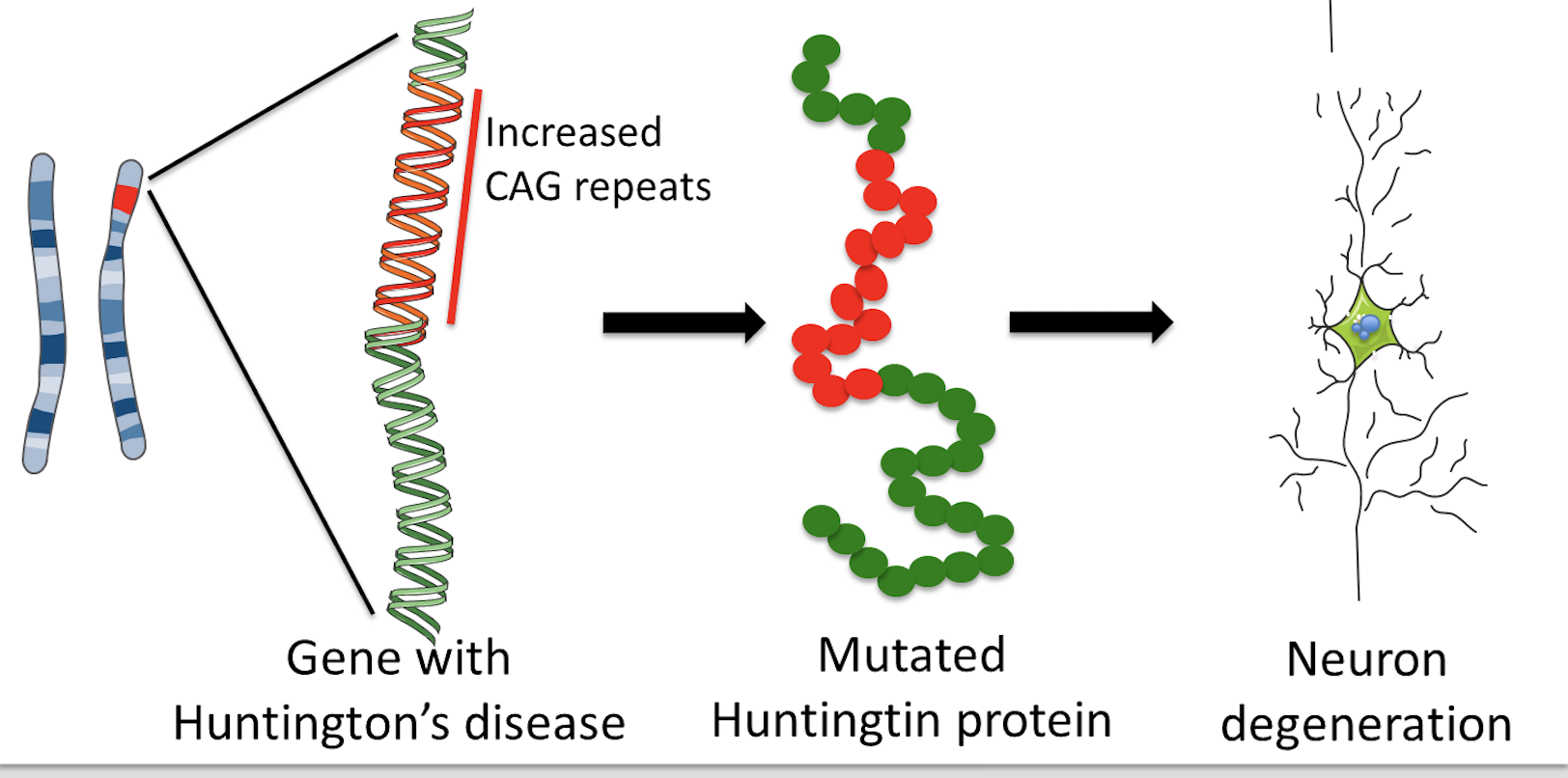

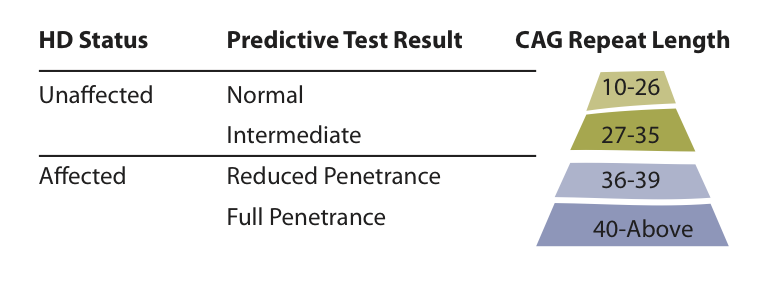





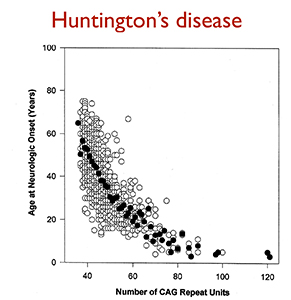


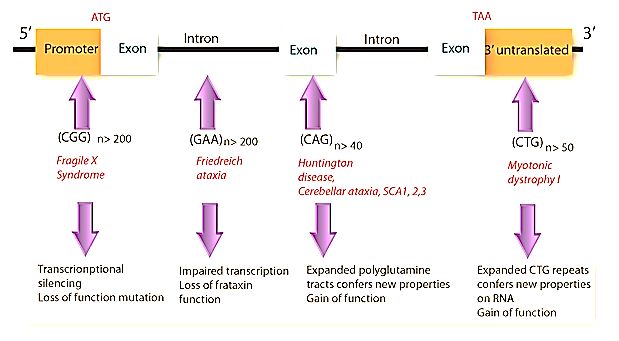

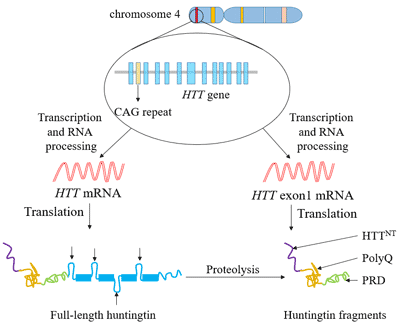
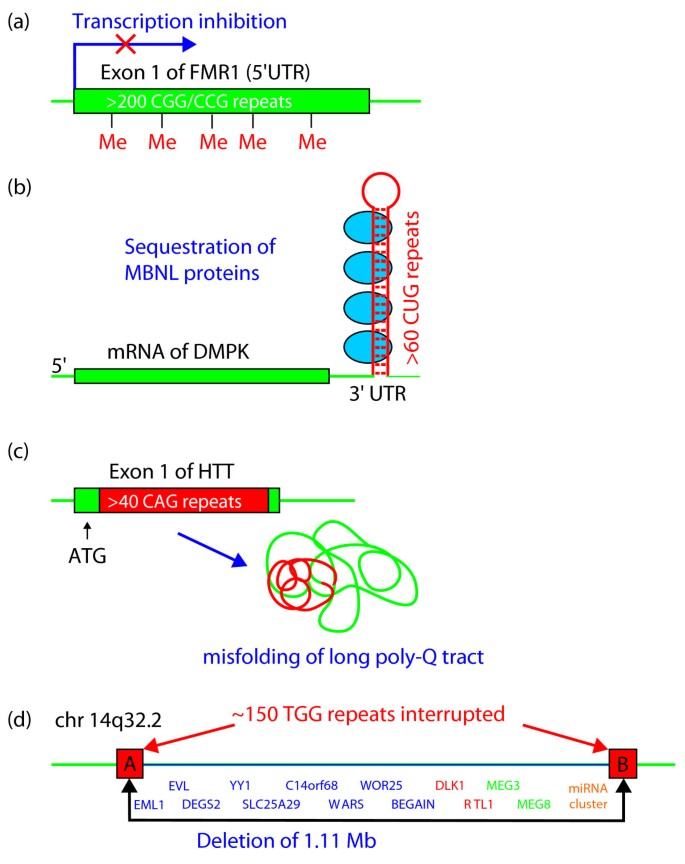


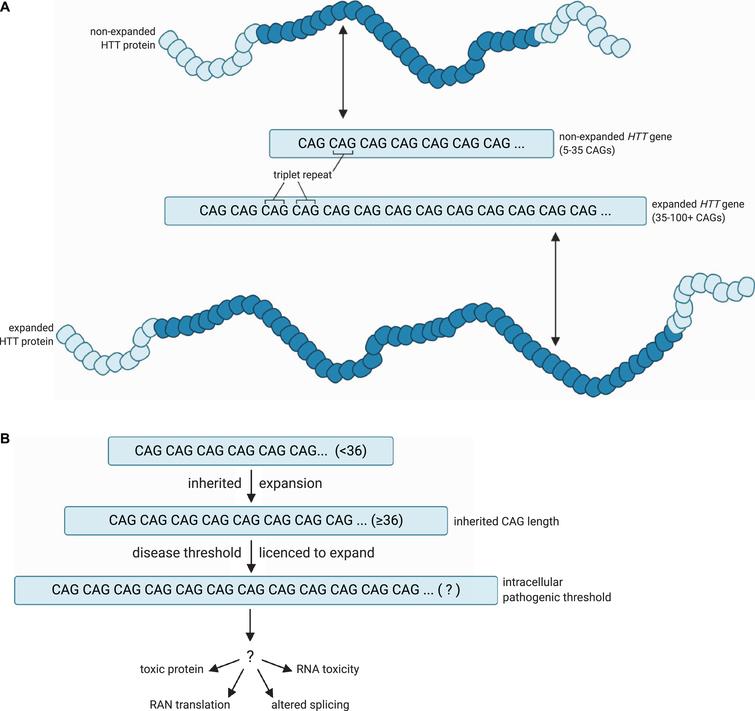


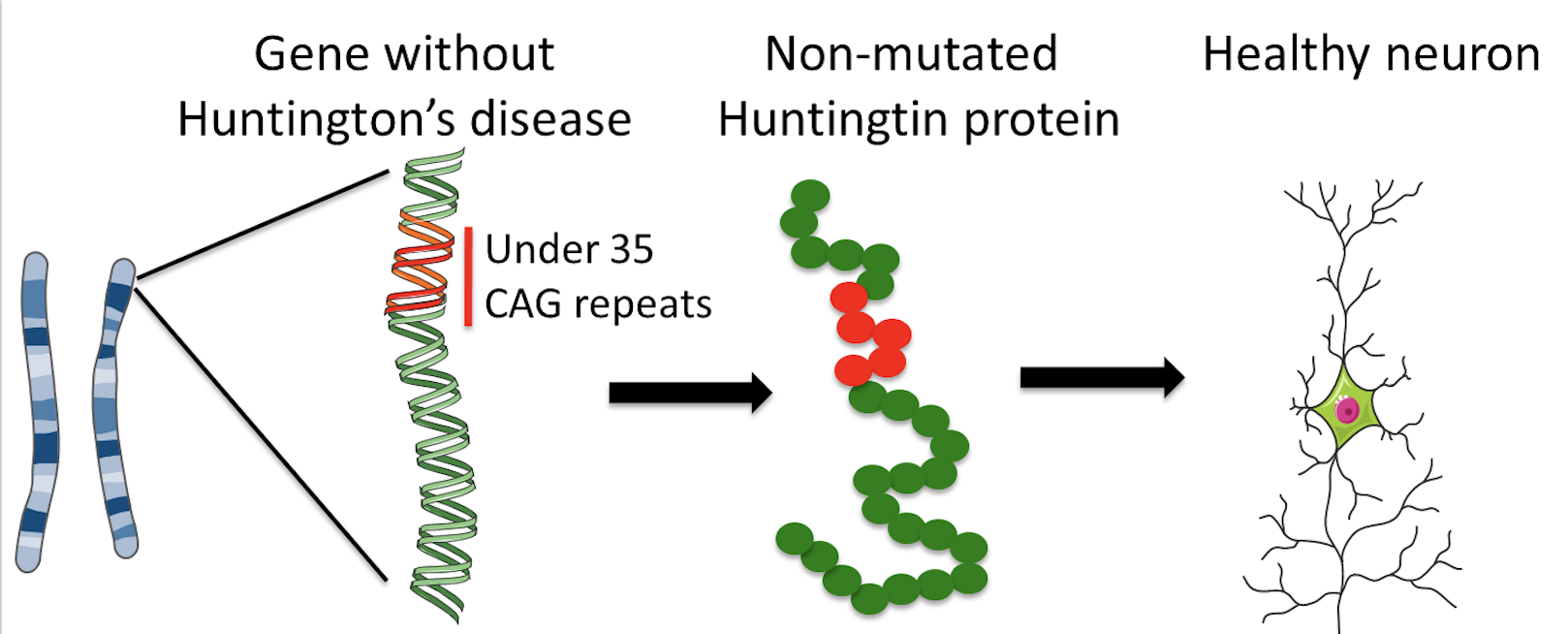

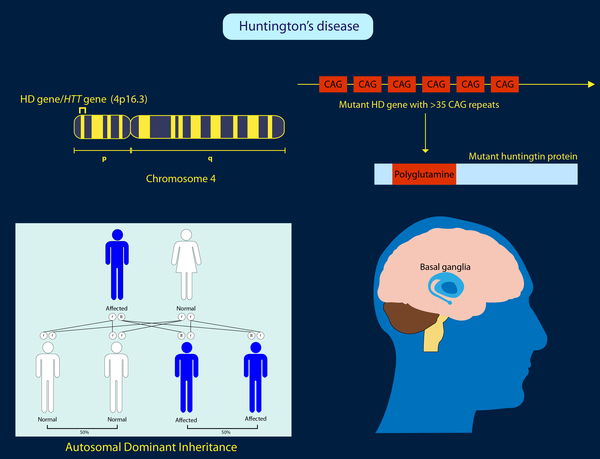

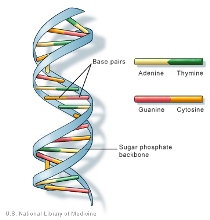





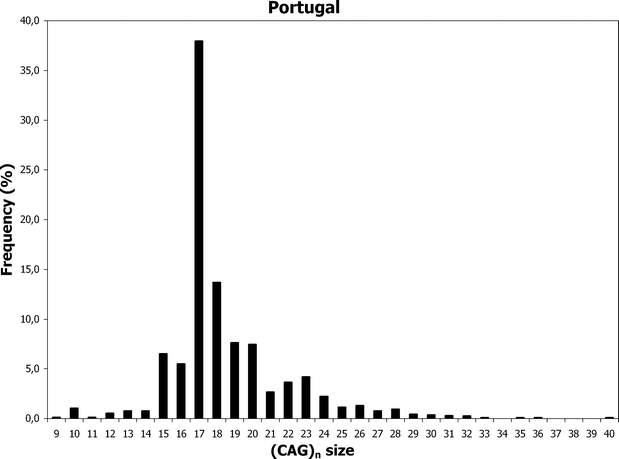
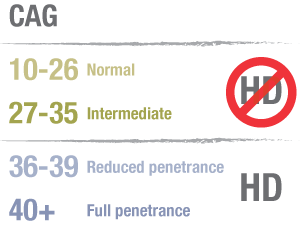

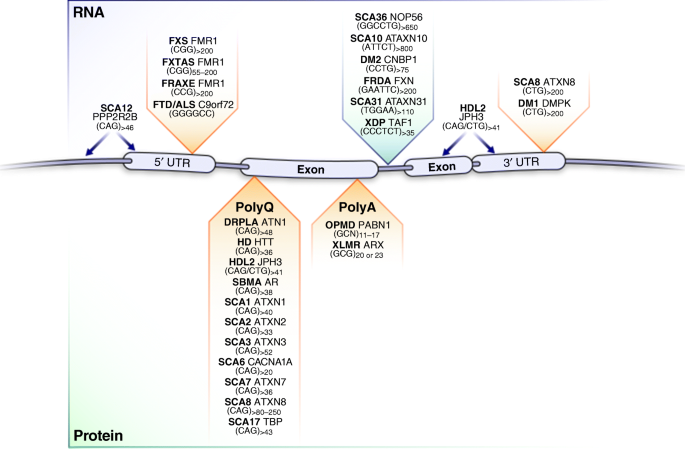

Post a Comment for "Huntington Disease Trinucleotide Repeat"